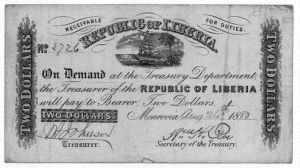 The day before his inauguration, U. S. President-elect Abraham Lincoln finalizes his Cabinet appointees. Among his Cabinet is former presidential candidate (1860) Edward Bates of Missouri, appointed as Postmaster General.
The day before his inauguration, U. S. President-elect Abraham Lincoln finalizes his Cabinet appointees. Among his Cabinet is former presidential candidate (1860) Edward Bates of Missouri, appointed as Postmaster General.
A former slaveowner, Bates no longer owns slaves nor supports slavery. The story of Bates’ emancipation of his slaves intersects the world of Baptists, as reported by a February 18, 1860 in-depth feature article on the life of Edward Bates in the pages of the New York Times:
In 1846, Mr. BATES’ aged mother died, having emancipated, by will, the few slaves that remained to her. A few years since, his sister, SARAH BATES, then living with her brother at St. Louis, but having set free a portion of her slaves at an earlier date, emancipated the remainder, thirty two in number, by a formal deed.
Mr. BATES himself has acted in a similar manner. Some fifteen years ago, having only three slaves, two of them left him, and he permitted them to go at large without pursuit; one only remained — a young man of 20 years of age, by the name of ADAM WHITE. He signified to his master a desire to go to Liberia; to this Mr. BATES assented, but represented to him that as he had only been a house-waiter, he was hardly fitted to enter upon the severe duties of the position he desired. He, therefore, advised him to remain five years, and quality himself by education and learning a trade, to make sure of success. ADAM assented joyfully to this plan, and pursued it with energy. Mr. BATES’ sons, then school-boys, taught him to the evenings, reading, writing and arithmetic; he was then sent for a time to a cooper, who instructed him to his trade. After this, he was placed with a shoemaker, whose art he also mastered. The five years had now expired, and ADAM, provided by Mr. BATES with the tools for his two trades, and a moderate outfit of money and clothing, was dispatched to Liberia. Here he has prospered, and is now an elder in the Baptist church. This was Mr. BATES’ last slave.
Source: New York Times story (link); image from Library of Congress (link)


